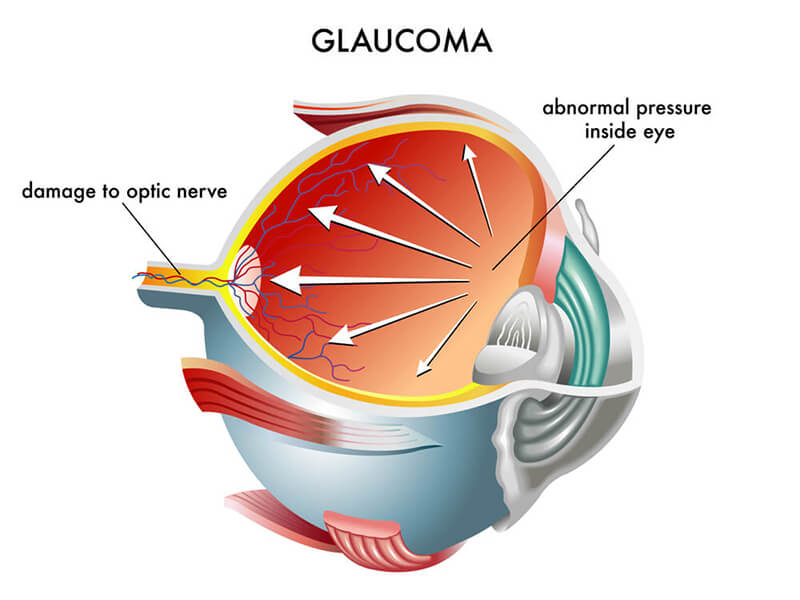Glaucoma Diagnosis & Treatment
According to the World Health Organization, glaucoma is the second leading cause of blindness in the world today. In the United States alone, this disease affects approximately 2.2 million people, but only half actually know they have this condition.
What Is Glaucoma?
Glaucoma is the name for several eye diseases that cause damage to the optic nerve. The optic nerve, which acts as a messenger for information between the eye and the brain, is in the back of the eye. When the nerve is damaged, a loss of vision is likely to occur.

Initially, people with glaucoma will lose their peripheral (side) vision. If the disease remains untreated, vision loss will likely get worse. This can lead to total blindness over time.
Glaucoma Symptoms
Glaucoma often presents with no symptoms to warn you. Many doctors, due to this lack of physical symptoms, have called it “the silent thief of sight.” Therefore, detecting and treating the disease early is important to prevent blindness.
When left untreated, progressive vision loss will occur. Here are the typical stages of vision loss:
- Blind spots in your peripheral vision
- Tunnel vision
- Total blindness
Glaucoma Risk Factors
- Age: You’re at higher risk if you’re older than 40.
- Ethnic Background: Certain ethnicities, such as African-Americans, are at risk of developing the disease at a younger age and are more likely to experience permanent blindness as a result.
- Family History: Glaucoma may have a genetic link; therefore, if you have a family history, you are at a greater risk of developing the condition.
- Medical Conditions: Diabetes, heart disease, high blood pressure and hypothyroidism are several conditions that may increase the risk of developing this disease.
- Other Eye Conditions: Eye tumors, eye inflammation, lens dislocation and retinal detachment could increase the risk of glaucoma. Certain types of eye surgery and being nearsighted or farsighted may also increase your risk.
- Injury: Increased eye pressure is sometimes a result of severe eye injuries; therefore, trauma can increase the risk of developing this disease.
- Long-term Corticosteroid Use: Corticosteroid medications (e.g. some eye drops) over a long period of time may increase the risk of developing glaucoma.
Glaucoma Treatment
Boling Vision Center offers state-of-the-art detection and management of glaucoma in Elkhart, Goshen, Notre Dame and South Bend and a variety of treatments that slow its progression. Although treatment will not be able to bring back vision that has already been lost, it can keep your vision from getting worse. Lowering the pressure in the eyes to prevent additional damage to the optic nerve is the goal of treatment.
Boling Vision Center usually begins treatment with drops that lower the fluid production in the eye. Although this is a first treatment option, we do not recommend it for patients with lung or heart disease. Other cases may require surgical treatment using selective lasers (SLT). The laser light is utilized to improve the flow of fluid in the eye and reduce pressure. Our ophthalmologists are trained experts in these advanced procedures.
For patients that have been diagnosed with glaucoma and are now preparing for cataract surgery, iStent® may be an option to help reduce intraocular pressure.
Schedule An Eye Exam Today
Don’t wait until you have vision problems! Schedule your appointment online today or call 800-283-8393






